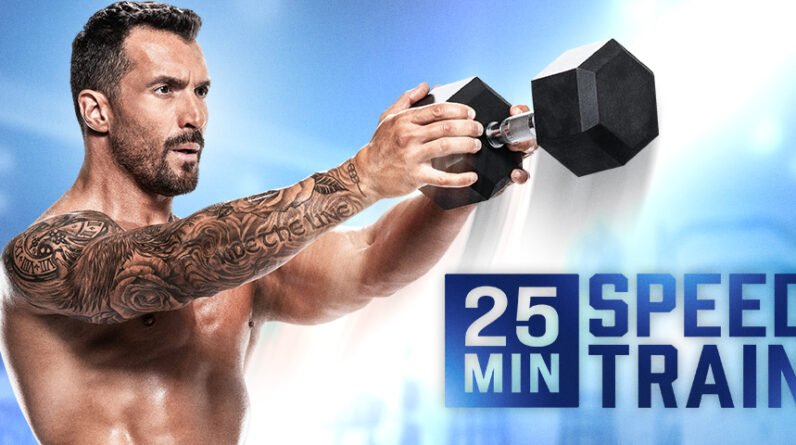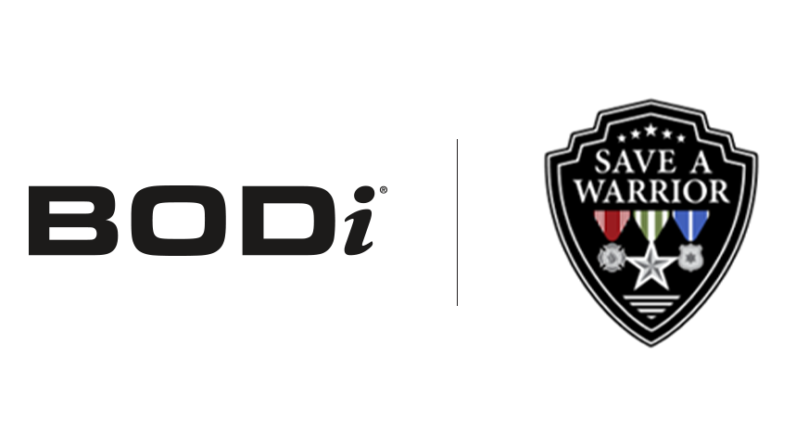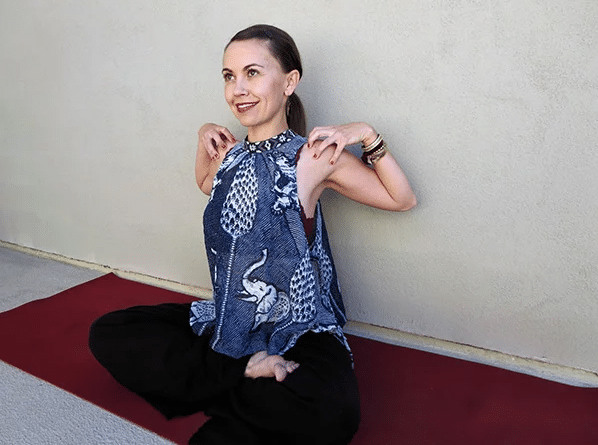
The next time you’re up for a challenge, make your way down this list of planks, starting with the easiest variations (which make ideal planks for beginners) and then moving on to the ones that will fire up every muscle in your body. You might not feel the burn at first, but trust me—once you make it to the plank pike, you won’t dare call planks boring ever again.
Experts In This Article
- Amy Schemper, CPT, personal trainer and BowFlex advisor
- Brian Spencer, instructor at East River Pilates in New York City
- Bridget O’Carroll, founder of Studio Qila
- Charlee Atkins, fitness trainer and founder of Le Sweat
- Colette Dong, founder of The Ness in New York City
- Kelly Drew, CPT, certified personal trainer and founder and CEO of 360 Fitness Coaching
- Meg Takacs, CPT, run coach and founder of the Movement & Miles app
- Pamela Trujillo, certified personal trainer and SLT Tread training manager
- Traci Copeland, Nike Master Trainer, yoga instructor, and fitness model
What is a plank?
Before diving into plank variations, let’s get clear on what planks are to begin with. “A plank is an isometric exercise (where the muscles are neither lengthening nor shortening) that works the entire core unit, as well as engaging the upper and lower body,” says trainer BowFlex fitness advisor, Amy Schemper, CPT. “It’s a core stability exercise, where the core muscles resist movement rather than create movement.”
Specifically, Kelly Drew, certified coach and clinical exercise physiologist at Orangetheory Fitness, says that planks work all the muscles in your core, plus muscles in your back, shoulders, hips, and legs all at once, which might explain why your whole body shakes during a plank. “Planks provide great ‘bang for your buck’ in building strength and whole-body stability, which helps improve strength in almost every other exercise you do. They are foundational in strength training regimens and can be implemented in several ways,” she says. That’s where plank variations come into play.
Perfect your plank form
One more thing before exploring plank variations: form. There are a few form notes that will hold true no matter what kind of plank you’re doing. To start, you want to keep your body in a nice straight line from your head to your heels. Keep your gaze down on the mat in front of you so your neck is in a nice neutral position. Keep your core engaged (think: belly button to spine) and your hips in line with your shoulders. Additionally, you want your arms to be aligned. If you’re on your forearms, keep your elbows right under your shoulders and if you’re on your hands keep your wrists right in line with your shoulders. Be careful not to lock your elbows. Finally, don’t slouch: Press into the ground so your weight is lifted up and out of your shoulder sockets.
Keep these points in mind as you move through the following plank difficulty levels.
The easiest to hardest plank variations
1. Straight-arm plank
The straight-arm plank is your foundation. Though it’s a bit tougher on your wrists than a forearm plank, it’s a teensy bit easier on your core. During a straight-arm plank, your hands are stacked under your shoulders as you hold your body in a straight line from your head to your feet. (If you want, you can move from this into a plank-push-up–hybrid.)
If your body doesn’t feel up to holding this position, you can work up to this move by first practicing with your knees on the floor (keeping a straight line from your shoulders to your knees), or by doing a plank with your hands against a wall or another elevated incline like the kitchen counter.
2. Forearm plank
During a forearm plank, it’s a bit more difficult to keep your hips in line with your shoulders, so you use your core a bit more. However, it also takes weight out of your wrists, which can make it more comfortable than a straight-arm plank. You’ll want to keep your elbows right under your shoulders and make sure you’re pushing up and out of your shoulder sockets instead of sinking down into them.
3. Side plank
Instead of having the support of both of your arms, you add balance into the mix when you’re holding a side plank. This can make the exercise feel even harder—and ignite an even greater burn!—than the traditional plank. It also makes the move more of an oblique challenge.
From a kneeling position, shift your weight into one arm, keeping your wrist right under your shoulder. Your feet can either be stacked on top of each other or staggered with your top foot in front of your bottom foot (for more stability). If this position is too much, you can drop your bottom knee to the ground. In either position, keep your hips up and in line with your shoulders instead of letting them droop down toward the ground.
4. Bear plank
Bear planks make your entire body roar—seriously. Unlike the bear crawl, where you’re on all fours with your knees hovering above the floor as you travel across the room, the bear plank is stationary. Even though it’s a tiny movement, the burn is immediate.
Start on your hands and knees with your wrists right under your shoulders and your knees right under your hips, toes tucked under. Press your palms into the mat as you lift your knees and let them hover an inch or so off the mat.
5. Reverse plank
This is a normal straight-arm plank, just reversed. While a traditional plank targets the front of your body, this version targets the back of your body too, making it even harder.
Begin seated on the floor with your legs straight out in front of you and your feet flexed. Bring your arms to your sides with your palms flat on the ground, fingertips spread wide and pointed straight ahead. Squeeze your glutes as you lift up your hips, opening your chest and drawing your shoulders down, back, and away from your ears. Keep a soft bend in your knees to avoid locking them.
6. Mountain climbers
Take your plank on the move with mountain climbers. You’ll feel your core working harder as it keeps your upper body stable while you alternate your feet.
Start in a straight-arm plank and keep your hips down as you quickly bring one knee into your chest, alternating from one leg to the next. You can either walk them in (pausing with both feet together in a plank in between each knee lift) or run them in (keeping one foot off of the ground at all times).
7. Plank jack
This move is just what it sounds like—a plank fused with a jumping jack. Start in a straight-arm plank and engage your core, keeping your hips steady as you hop your feet out and in like a horizontal jumping jack.
8. Plank walkout
The plank walkout is essentially a burpee without any jumps. Start in a standing position and bend your knees as you walk your arms forward into a plank, making sure you don’t drop your hips toward the floor. Once you hit your plank, take a breath and walk your hands back toward your feet, pressing down through your heels as your lift so you land in a squat position before returning to a stand.
9. Walking plank
To perform a walking plank, you start in a straight-arm plank and then one arm at a time lower into a forearm plank and then come back into a straight-arm plank. This move doesn’t look like much, but because you’re staying low to the ground, your core will feel like it’s set on fire.
10. Plank to Pike
This advanced plank exercise is honestly so difficult because it’s incredibly challenging to maintain the balance you need to perform it correctly. And the harder you’re working to balance, the harder your core is working.
Start in a full-arm plank either wearing socks or with gliders under your feet. Begin to lift your hips as you keep your legs straight and pull your feet in toward your hands, keeping most of your body’s weight in your hands. Slowly return to your starting position.
Frequently Asked Questions
What muscles does a plank target?
As we mentioned above, planks (and plank variations) target all the largest muscles in your body. “The plank is an excellent exercise that targets the rectus abdominis (abs), transverse abdominis (core support), and erector spinae (spine muscles),” Drew says. “It also engages various other muscles, such as the mid-back, shoulders, chest, quads and glutes, making it a full-body workout.” According to Schemper, planks can also tap into your pelvic floor.
Is there anyone who shouldn’t do a plank?
The beauty of plank variations is that there are so many different options that there’s honestly something for everybody. “Planks can be scaled down or up, depending on fitness levels, so they are generally appropriate for most people,” Schemper says.
The primary exceptions are if you’re pregnant or just gave birth. “Pregnant individuals in the second and third trimester and newly postpartum individuals are advised to modify or avoid planks, as planks can put excess intra-abdominal pressure on the core and pelvic floor,” Schemper says. “During these times, planks can be done on the wall, elevated on an incline, or avoided completely.”
Other reasons you may want to avoid planks, Drew says, is if you have shoulder, or ankle injuries, as the movement places tension on those areas.
How long do you have to hold a plank for it to be effective?
Plank challenges on Instagram and TikTok will have you believing that you need to hold a plank for minutes on end in order to get the benefits. That’s not reality, though.
“Holding a plank for anywhere between 10 to 60 seconds is an appropriate amount of time, especially if you focus on engaging the entire core as a unit,” Schemper says. “Beginners can hold for five to 10 seconds at a time and work up.” Although holding a plank beyond a minute or two can challenge your endurance, it isn’t generally recommended, she adds: “As your core muscles fatigue, you may put excess strain on your lower back or shoulders, leading to improper form.”
How long does it take to notice the results of planks paying off?
Performing daily planks (and plank variations) pays off pretty quickly. “Your core muscles will start to feel stronger after even just a few weeks of beginning planks,” Schemper says. “You’ll probably notice you can gradually increase your time and feel more engaged as you plank.” Additionally, Drew says committing to daily planks can help diminish chronic back pain for some people.
“Not only will you experience improved strength and the ability to maintain proper form for longer periods, but many have also reported a reduction in lower back pain, demonstrating the transformative impact of this fundamental exercise,” she shares.







